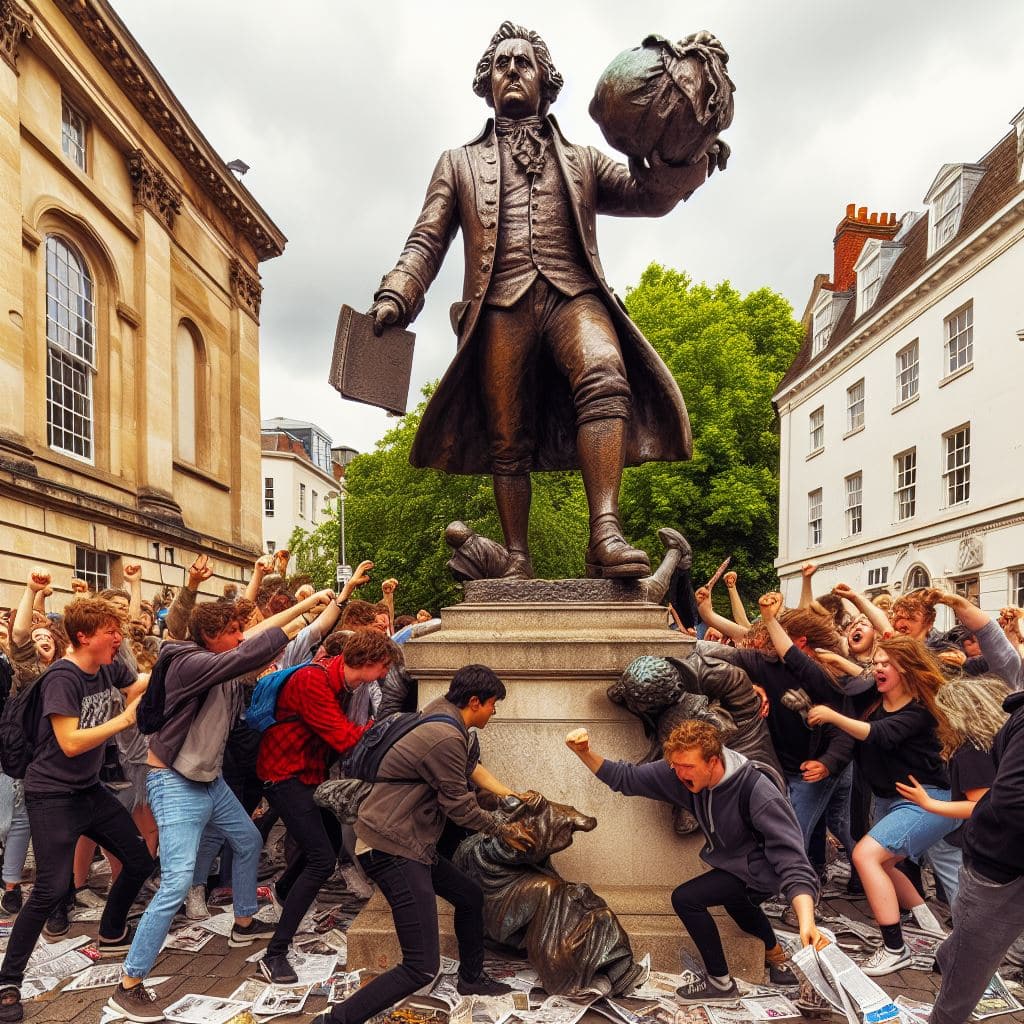Measuring “Wokery”
SUGGESTED



One of the oddities about this Culture War is that we cannot even seem to agree on who the belligerents are, what it is fought over, or whether it is even a real thing or not. It is almost impossible to talk about the Culture War without ending up as a participant in the Culture War.
People on the woke, progressive side of the Culture War are not simply trying to convince us that their side is right, and that we should join them. Rather, they are trying to deny their own existence. As the writer and broadcaster Afua Hirsch puts it in the Guardian:
“[T]he “anti-woke” […] define themselves in opposition to an identity that doesn’t actually exist. They are anti-woke, even though there is no “woke”. […] [T]he person using the word is likely to be a rightwing culture warrior angry at a phenomenon that lives mainly in their imagination.”
According to people on Hirsch’s side of the argument, “the Culture War” is being artificially and needlessly stoked by a financial elite, in order to distract people from the country’s economic problems (or, in the more overtly Marxist version, to divide the proletariat, in order to stave off a socialist revolution). Making people angry at an imaginary “woke elite” that is supposedly attacking their history, their values, and their lifestyles, is, in this view, a well-orchestrated diversion tactic.
The problem with phenomena like “wokery” or the “Culture War” is that they are necessarily somewhat nebulous, and difficult to define precisely, let alone measure. Nonetheless, some aspects of it lend themselves to proxy measurements. And these suggest that “wokery”, far from being a made-up moral panic over nothing, is a very real phenomenon.
“Wokery” in the media
A recent media analysis has looked at the relative frequency with which particular terms that are associated with a “woke” progressive worldview, such as “white privilege”, “unconscious bias”, “cultural appropriation”, “whiteness” and “hate speech”, are mentioned in the British media.
For most words, increases or decreases in their relative frequency have obvious external trigger events, and follow exactly the pattern we would expect. For example, media mentions of “Theresa May” increased in 2010, when she became Home Secretary, exploded in 2016, when she became Prime Minister, and then fell off a cliff when she stepped down as Prime Minister. Use of the word “recession” exploded at the onset of the Great Financial Crisis, and then slowly declined again. Mentions of the European Union shot up in 2015, at the start of the EU Referendum campaign, remained elevated during the Brexit negotiations, but dropped once Brexit had actually happened. And so on.
For woke terminology, however, the authors find a very different pattern. The use of woke vocabulary flatlined, or even slowly declined, throughout the 2000s, and then began to explode at some point in the first half of the 2010s. For example, use of the words “racism”, “racist”, and various derivatives, nearly trebled between 2010 and 2020, as did the use of the word “slavery”, while the use of “colonialism” doubled. Their time series ends in 2020, but there is no reason to believe that this was the peak.
None of these changes have any obvious external trigger event. It seems rather unlikely that Britain was three times more racist in 2020 than it was in 2010.
The authors also look at how these trends differs between left-leaning, right-leaning and centrist publications. They assume that, broadly speaking, left-leaning publications use woke terminology approvingly, while right-leaning publications use it disparagingly.
It turns out that the surge in the use of woke terminology is clearly led by left-wing publications, with centrist and right-wing publications only following at a safe distance. There is only one clear exception to this: in 2017, the term “safe space” was far more likely to appear in right-leaning publications (presumably mocking an alleged “safe space culture”) than in a left-leaning ones. In this instance, it is fair to say that this is something of a contrived Culture War, out of proportion with what is actually happening.
But this is the exception. The general pattern is that “wokery” is driven by the Left, and the Right just reacts to it, with some time lag. One can certainly criticise right-leaning publications for rising too readily to a Culture War bait, but one cannot accuse them of conjuring up a Culture War out of nothing.
“Wokery” in schools
A recent survey among young adults looks at the extent to which concepts from “Critical Race Theory” (CRT) are being taught at schools, either by teachers or by guest speakers. It shows that 35% of young adults have come across the term “systemic racism” in the classroom, 42% have been taught about “unconscious bias”, and 47% about “white privilege”. The majority of students (59%) have come across at least one of those three terms.
We can see this as a lower-bound estimate. The survey only asks about those three CRT terms (there are others), and it inevitably relies on students’ memories. (Students not remembering things they have learned in the classroom would not be exactly unheard of.)
It is not too surprising that schools teach students about these concepts. For better or worse, CRT is part of modern discourse, and it is here to stay, so it would be strange if schools acted as if it were not there. However, it appears that CRT concepts are being taught as facts, not as perspectives about which students have to make up their own minds. Among those students who remember having been taught about CRT concepts, only one in three say that they were also taught about the existence of respectable alternative viewpoints.
It is worth pointing out that the survey also cautions against the interpretation, popular in parts of the right-wing press, that schools are Marxist indoctrination factories. It does show that schools teach CRT, but it also shows that for the majority of young adults, school is not the place where they come across CRT concepts for the first time. They are about as likely to pick them up from their own peer group as they are to pick them up from their teachers, and they are five times more likely to pick them up via social media (where half of young people first encounter those concepts).
Thus, right-wing Culture Warriors who enjoy obsessing about how “our schools have been captured by woke Marxists”, but who also insist that “Twitter is not real life”, have got their priorities wrong. But whatever the transmission mechanism: Critical Race Theory is clearly no longer the academic niche discipline it once was. It is a real thing, and its critics are not chasing phantoms.
“Wokery” in the workplace
A recent survey among working-age people investigates how widespread “diversity training” really is. It shows that among employees of large organisations (≥250 employees), over 60% have taken part in formal diversity training. Even in medium-sized organisations (100–249 employees), a third of employees say they have. It is only in small organisations that diversity training is still largely unheard of.
Of course, “diversity training” does not have to mean “woke indoctrination”. The survey does not tell us much about the content of those training courses, but it could well be (it seems, indeed, highly likely) that they consist mainly of harmless platitudes.
Still, the survey also shows that among people who self-identify as politically right-leaning, those who have taken diversity training are more likely to say that they are nervous about expressing their opinions in public than those who have taken no such training. No such effect exists among people who self-identify as politically left-leaning (fewer of whom have such worries to begin with).
Conclusion
People can disagree in good faith about whether the spread of “woke” ideas in the media, the education sector, the workplace and elsewhere is a good thing, a bad thing, or a mixed blessing. That is a topic for a different article. But there can be no doubt that woke dominance is a real thing. Woke progressives should have the courage to stand by their convictions, defend the spread of their ideas, and celebrate their victories, rather than simply deny that it is happening at all.




